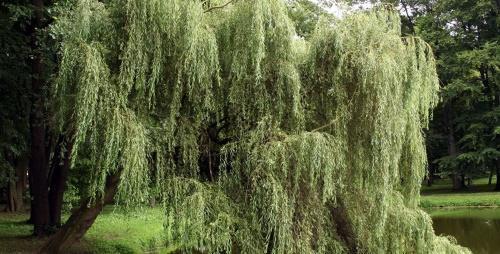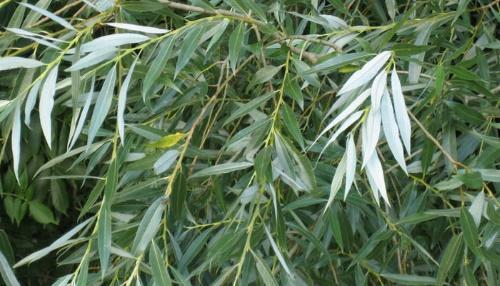Silvery willow: characteristic features and basics of cultivation
 Silvery willow is one of the largest representatives of the willow family, which grows preferably as medium to large shrubs. But the willow looks very impressive: firstly, this tree is very tall (it can reach a height of up to 30 m), secondly, a trunk girth of about 3 m is unbearable for one person, and in the third, the diameter of its crown is sometimes equal to the total height ...
Silvery willow is one of the largest representatives of the willow family, which grows preferably as medium to large shrubs. But the willow looks very impressive: firstly, this tree is very tall (it can reach a height of up to 30 m), secondly, a trunk girth of about 3 m is unbearable for one person, and in the third, the diameter of its crown is sometimes equal to the total height ...
Despite its size, culture is found not only in the wild, but is also often used in landscaping parks and even private lots. How did this tree of immodest dimensions deserve such popularity?
Silvery willow has many names. Most often it is called white willow or weeping willow, as well as white-tailed, milkweed, willow or Tristis.
Botanical characteristic
In nature, without human intervention, willow grows into a powerful tree with a weeping crown and a thick trunk or several central shoots. However, with regular felling, it turns into a dense tall shrub. Young twigs are olive-colored or brownish-red at first, with a slight silvery pubescence. Over time, the shoots become shiny and bare, the green color disappears. The branches are very flexible and fall down to the ground. The bark on the trunk coarsens and turns gray, and in old specimens it becomes covered with longitudinal cracks.
White willow - long-liver and 100-year-old trees are the rule rather than the exception.
 A beautiful crying crown is decorated with small narrow leaves with sharp tips. It is noteworthy that the upper part of the leaf plate is green, and the lower one is silvery, which gave the name to the species. This color allows the willow to change its appearance: in calm weather it is green, but with a breath of breeze, the leaves begin to move and the crown also becomes silvery before our eyes. By autumn, the leaves turn slightly yellow and do not fall off for a long time.
A beautiful crying crown is decorated with small narrow leaves with sharp tips. It is noteworthy that the upper part of the leaf plate is green, and the lower one is silvery, which gave the name to the species. This color allows the willow to change its appearance: in calm weather it is green, but with a breath of breeze, the leaves begin to move and the crown also becomes silvery before our eyes. By autumn, the leaves turn slightly yellow and do not fall off for a long time.
At the end of April, simultaneously with the blooming of the foliage, the willow blooms with small yellow catkins, in the place of which boxes with seeds ripen at the beginning of summer.
Growing features
As you know, willow grows best on moist soil near water bodies, but it is undemanding to the very composition of the soil. The annual growth of the tree is good, up to 1 m in height, but with a lack of moisture, it decreases. For planting, it is better to take a well-lit place - the willow loves light.
The tree is highly frost-resistant and does well without shelter.
Willow care, planted at home, is minimal and consists in the following activities:
- Regular watering, especially of young seedlings and trees growing away from water bodies.
- Loosening and mulching of the trunk circle.
- With weak growth - feeding with nitroammophos.
Silvery willow lends itself well to shaping and by trimming its crown, you can give any decorative shape.Willow propagates mainly by cuttings, which take root quickly, but the seed method is also possible, but it has little root growth.